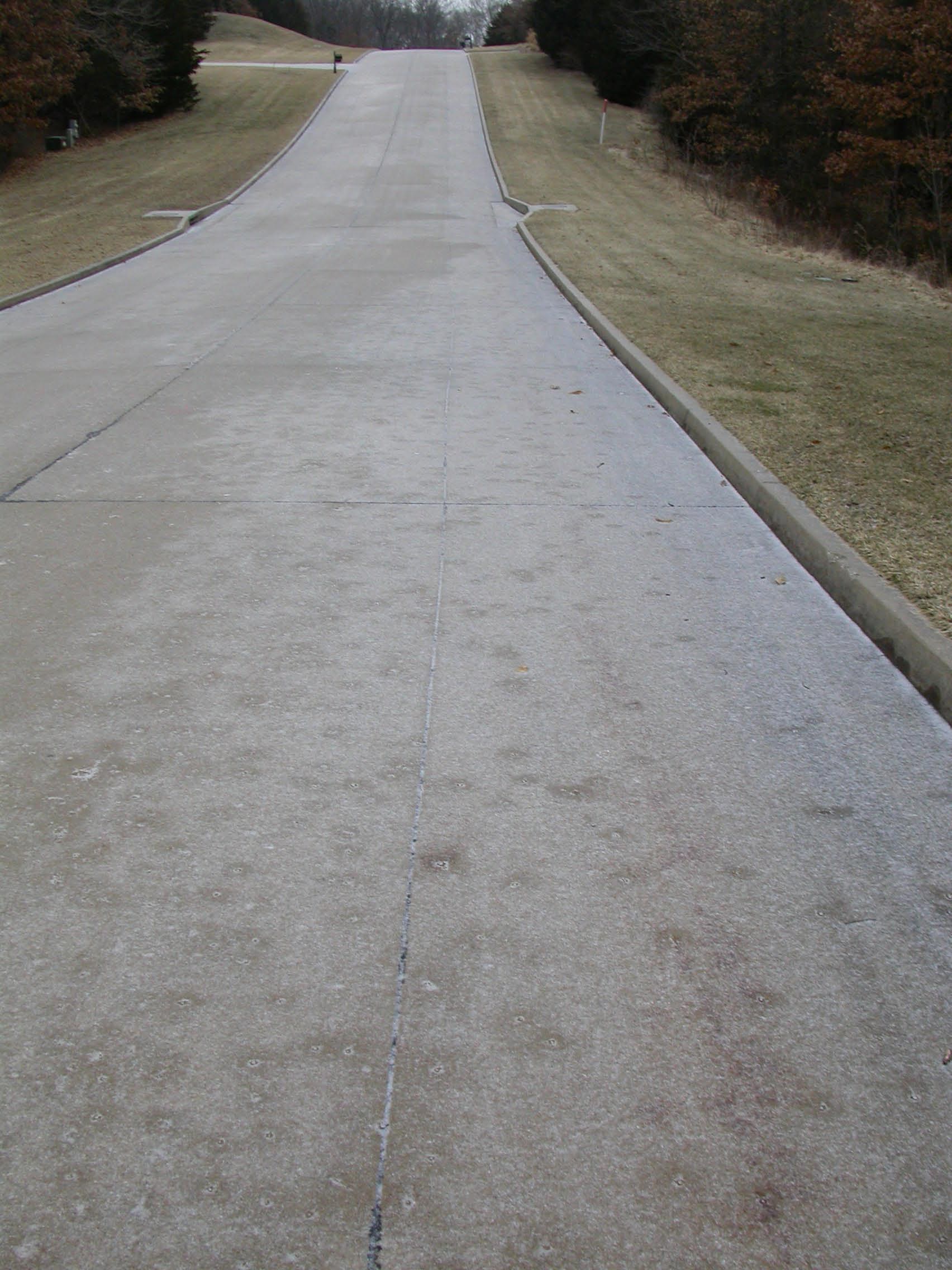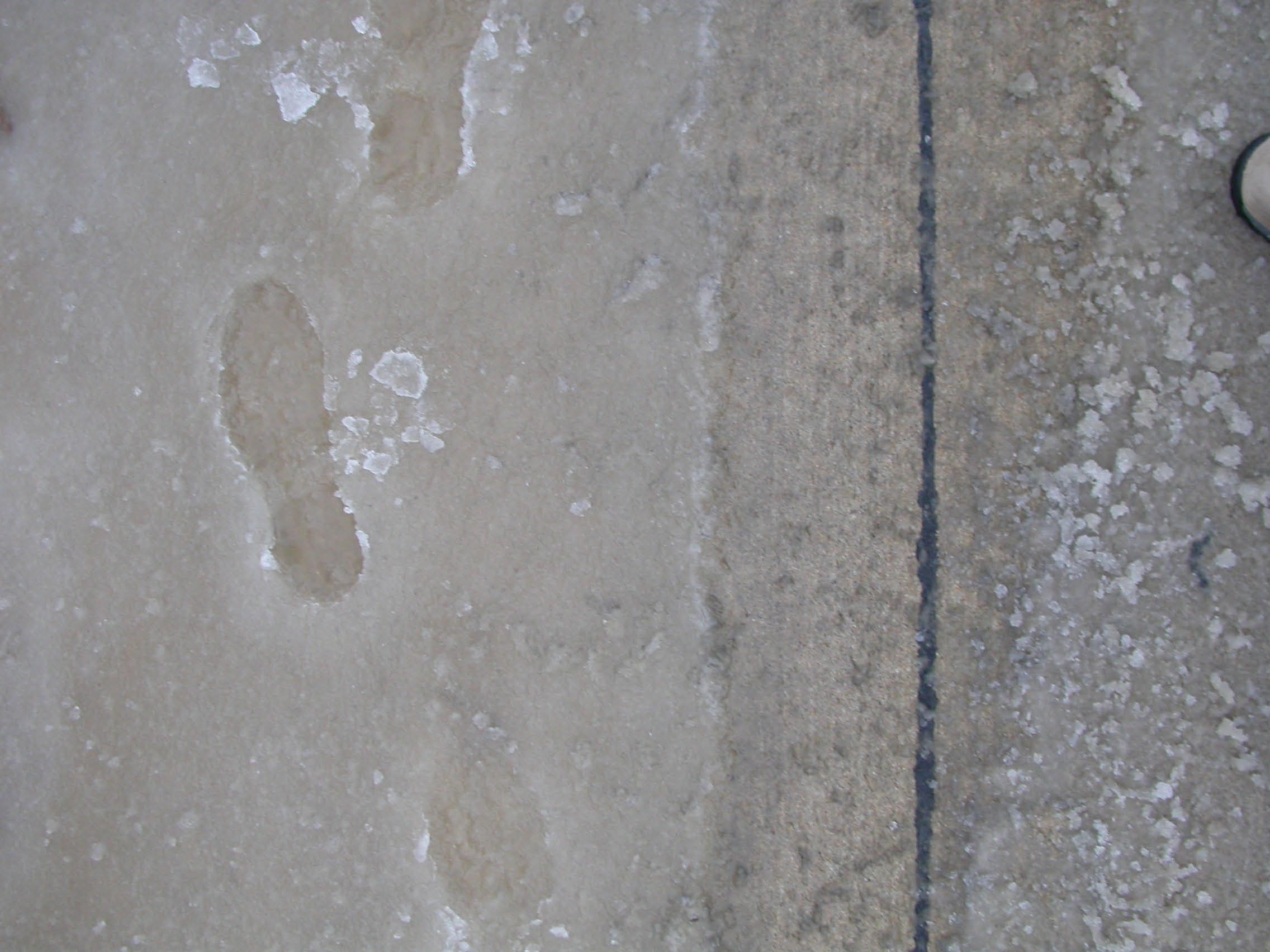Puddles and Soil Temperature. Part 3. Why didn’t the puddle freeze?
Tuesday, March 25th, 2008Based on the last two blogs, the evidence seems strong that the puddle was being fed by liquid water coming from underground springs. A colleague of mine, Kristina Katsaros, pointed out that even a spring-fed puddle might have frozen under such conditions. Maybe the water would freeze on the top, for example.
Kristina has studied Arctic ice and the effects of salt in the sea water on freezing. So she suggested that another factor be considered: salt on the roads. This would be a modification of the spring-water hypothesis, to allow for the effect of salt.
In the United States, road crews often apply sodium chloride or magnesium chloride to roads because these two compounds can melt snow or ice on the roads, making them safer to drive on. This happens because these two compounds dissolve in water. Salty water has a lower freezing temperature than pure water.
On my trip out from my brother and sister-in-law’s house to take a picture of the puddle, the road was solid white. But coming back, I noticed something interesting: The ice and snow was starting to melt in little spots.

Figure 6. Ice and snow melting in spots on road.
When I looked more closely, I discovered a salt crystal at the center of each spot, surrounded by melting snow and ice. You can see a few of the crystals and their impact on the surrounding ice in Figure 7, below.
Figure 7. Salt crystal at the center of widening circles of melting ice and snow. The salt crystal is dissolving in the water, lowering its melting point.
If they spread salt crystals on the road the morning I took most of the puddle pictures (the fire hydrant picture was taken later in the day), I am guessing that salt was used on the road earlier in the winter as well.
So the puddle that I think was spring-fed may have been able to remain liquid thanks to salt on the road. And, since the puddle was in a low part of the road, salt may have washed down to this part of the road during the rains of the previous week.
So – it is likely that the puddle formed from underground water seeping into the road (built with cracks to allow the concrete to expand and contract), and the puddle stayed liquid because of a supply of warmer water, and a little salt. There are of course many more things I could do to confirm this hypothesis, but it seems reasonable given the facts I have available.
Suppose the puddle had been there from the previous week’s rains, and I simply missed it. Then the salt in the road might be sufficient to keep the puddle from freezing entirely.
